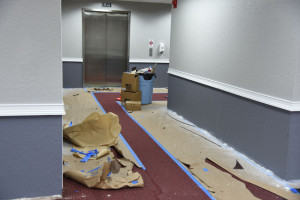 Lead paint continues to be a serious concern in building remediation, particularly in older structures that are being renovated or repurposed. Although the use of lead-based paint has been restricted or banned in many countries, it remains present in countless residential and commercial properties constructed before regulations were implemented.
Lead paint continues to be a serious concern in building remediation, particularly in older structures that are being renovated or repurposed. Although the use of lead-based paint has been restricted or banned in many countries, it remains present in countless residential and commercial properties constructed before regulations were implemented.
Lead-based paints were commonly used in homes constructed before 1978. If left undisturbed, the paint itself probably does not pose hazards. The primary concern with lead-based paint lies in its potential for deterioration and subsequent release of lead dust or flakes. During renovation or remediation activities such as sanding, scraping, or repainting, these hazardous particles can become airborne and pose health risks when inhaled or ingested. Infants, children, and pregnant women are especially vulnerable to the adverse effects of lead exposure, which can include developmental delays, learning disabilities, and neurological damage. Therefore, it is crucial for building owners, contractors, and remediation professionals to exercise caution and follow established guidelines when dealing with structures that may contain lead-based paint. Comprehensive testing and risk assessments are essential to identify areas with lead-based paint and determine appropriate remediation strategies to mitigate the hazards associated with its presence.
In 1978, lead paint was banned, but it is still present in older homes. Any disturbance to the paint can lead to potential health hazards. This is why renovations in older homes should be handled by professionals and lead paint should be removed by a professional lead remediation service.
The Environmental Protection Agency (EPA) passed legislation in 2008 requiring construction contractors who work in homes constructed prior to 1978 to be “lead-safe certified.” This means that these contractors have special training in how to contain and clean up any lead-based paint dust using methods that minimize exposure. This EPA rule applies both to large and small construction projects involving more than six square feet of painted surfaces.
Homeowners need to be educated on the dangers of lead-based paint in pre-1978 homes and urged to hire professional lead-safe certified remediation teams to remove any lead-based paint products before undertaking renovation projects. Not only is following EPA rules for removing lead-based paint necessary to protect the health of residents living in the home, but it is also the law. Saving a few dollars on a construction project is not worth the risk of creating a health hazard.
Removal of lead-based paint can be dangerous and requires contractors trained to deal with the special risks involved in lead remediation services. The team at C&S has insurance packages designed to protect the liability interests of environmental contractors who deal in lead remediation. Contact us for a consultation. https://csunderwriters.com/

Recent Comments